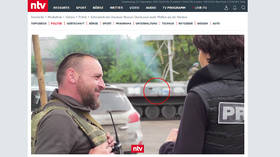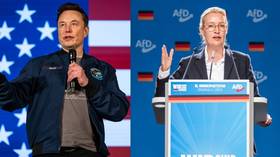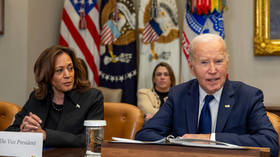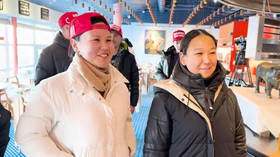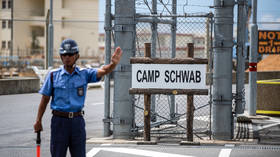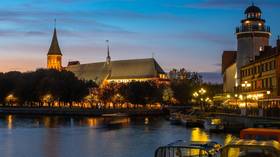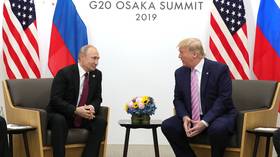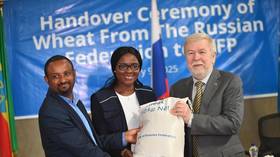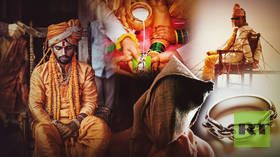Swastikas seen on US-made Ukrainian military hardware (VIDEO)
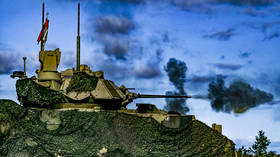
A video featuring a Ukrainian crew repairing a US-supplied Bradley infantry fighting vehicle near the frontline with Russia has revealed the apparent fondness for Nazi symbols among Kiev’s forces.
The footage, which was shared online by journalist Alla Khotshnyavska, showed a Ukrainian crew repairing the IFV’s tracks at an unspecified location in Donbass. Covered in mud, the Bradley sports a pair of swastikas scratched into the dirt on the side of the vehicle.
Radical Ukrainian nationalists played a key role in toppling the government in Kiev in 2014, and later attained significant influence in the country’s military. Their ideology stems from the forces that collaborated with the invading Nazis against the Soviet Union during World War II.
The presence of far-right activists, including neo-Nazis, in the Ukrainian armed forces was widely acknowledged in the West until hostilities with Russia erupted in February 2022.
Nazi insignia worn by Ukrainian troops has regularly been caught on camera. In one example, a member of President Vladimir Zelensky’s guards was seen with a skull and bones patch on his uniform when the Ukrainian leader was visiting the front line in September 2022. The image closely resembled the insignia of the 3rd SS Panzer Division ‘Totenkopf’.
The same month, a Ukrainian armored vehicle with a swastika painted on it was filmed by a crew from German television channel N-TV.
Last year, former Ukrainian President Pyotr Poroshenko wore a military-style shirt with a patch featuring another Nazi-linked symbol, the Black Sun (or ‘Sonnenrad’), as he was delivering equipment to troops.
An article by the New York Times in June acknowledged the controversial popularity of Nazi iconography in Ukraine, but claimed it did not reflect the ideology of the people using the symbols.
One of Moscow’s goals in its confrontation with Kiev is ‘denazification’ and the removal of radical Ukrainian nationalists from positions of power. Russian officials have argued that the discrimination against ethnic Russians in modern Ukraine is based on Ukrainian supremacism and is similar to Nazi ideology.
President Vladimir Putin told reporters last December that Moscow would not have been compelled to intervene in Ukraine “if they didn’t start to eradicate Russia on our historic lands in Ukraine, expel people from there, [and] declare Russians non-native.” Officials in Kiev were “crazy” to introduce such policies, he suggested.
